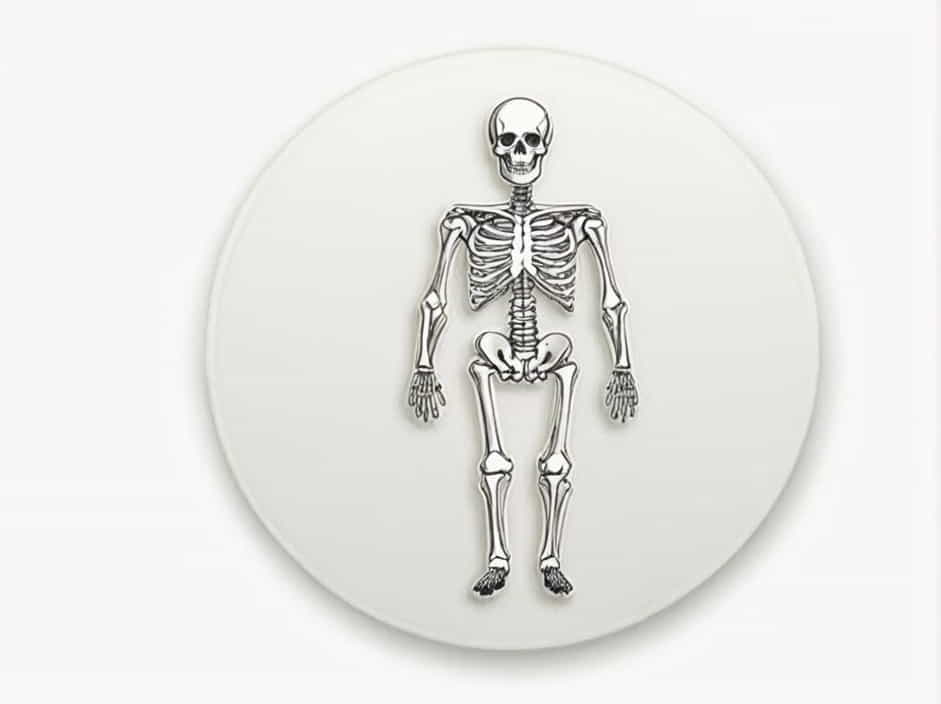The pectoral girdle, also known as the shoulder girdle, is a crucial part of the human skeletal system. It serves as the connection between the upper limb and the axial skeleton. Many people wonder, how many bones are in the pectoral girdle? The answer is simple: the pectoral girdle consists of 4 bones—2 clavicles and 2 scapulae.
This topic explores the bones of the pectoral girdle, their anatomy, functions, importance in movement, and how they contribute to upper body strength and flexibility.
Total Number of Bones in the Pectoral Girdle
The pectoral girdle is made up of:
- 2 clavicles (collarbones)
- 2 scapulae (shoulder blades)
Together, these 4 bones form the bony framework that supports the shoulders and allows the arms to move freely.
Detailed Look at Each Bone in the Pectoral Girdle
1. Clavicle (Collarbone)
Number: 2 (one on each side)
The clavicle is a long, slender bone that connects the sternum (breastbone) to the scapula. It sits horizontally at the top of the chest, just above the first rib.
Functions of the Clavicle
- Acts as a strut, keeping the shoulder away from the chest.
- Provides attachment points for muscles.
- Transmits forces from the upper limb to the axial skeleton.
- Protects nerves and blood vessels passing beneath it.
2. Scapula (Shoulder Blade)
Number: 2 (one on each side)
The scapula is a large, flat, triangular bone that sits on the posterior side of the ribcage. It provides a broad surface for muscle attachment and plays a key role in shoulder mobility.
Functions of the Scapula
- Provides attachment points for 17 different muscles.
- Acts as a foundation for arm movement.
- Contributes to shoulder joint stability.
- Helps in transmitting forces from the arm to the body.
Structure of the Pectoral Girdle
Flexible and Mobile Design
Unlike the pelvic girdle, which is rigid and built for weight-bearing, the pectoral girdle prioritizes mobility. This flexibility allows the arm to move through an incredibly wide range of motion—essential for tasks such as reaching, throwing, and lifting.
Key Joints in the Pectoral Girdle
- Sternoclavicular Joint: Between the clavicle and the sternum.
- Acromioclavicular Joint: Between the clavicle and the acromion process of the scapula.
- Glenohumeral Joint: Between the scapula and the humerus (upper arm bone).
These joints allow for shoulder flexibility, making it the most mobile joint in the body.
Functions of the Pectoral Girdle
1. Connecting Upper Limb to Axial Skeleton
The pectoral girdle is the anchor point between the arms and the central skeleton (the spine and ribcage). This connection allows the arm to move independently while still remaining securely attached to the body.
2. Facilitating Arm Movement
The unique shape and positioning of the clavicle and scapula allow the arm to move in multiple directions—forward, backward, sideways, and even rotation. This makes movements like throwing a ball or swimming possible.
3. Providing Muscle Attachment
Many important muscles attach to the bones of the pectoral girdle, including:
- Trapezius
- Deltoid
- Pectoralis major and minor
- Rotator cuff muscles
These muscles work together to control the shoulder joint and upper limb.
4. Shock Absorption
The clavicle helps absorb shocks transmitted from the upper limb during falls or impacts. This protects more vulnerable structures like the neck and head.
Why the Number of Bones Matters
Understanding Basic Anatomy
Knowing that the pectoral girdle consists of 4 bones helps students, medical professionals, and fitness enthusiasts better understand upper body anatomy. It’s a fundamental concept in anatomy education.
Diagnosing Injuries
Doctors and physiotherapists often check the clavicle and scapula when diagnosing shoulder injuries. Fractures of the clavicle are very common, especially in sports injuries or falls.
Common Conditions Related to the Pectoral Girdle
1. Clavicle Fractures
Because of its location, the clavicle is vulnerable to direct blows or falls. Fractures can significantly affect shoulder movement.
2. Shoulder Dislocation
The glenohumeral joint, supported by the scapula, is the most commonly dislocated joint in the body due to its wide range of motion and limited bony stability.
3. Rotator Cuff Injuries
The scapula provides attachment for the rotator cuff muscles, which stabilize the shoulder. Injuries to these muscles often cause pain and reduced mobility.
Differences Between Pectoral and Pelvic Girdles
| Feature | Pectoral Girdle | Pelvic Girdle |
|---|---|---|
| Number of Bones | 4 | 2 (each side) |
| Mobility | High | Low |
| Weight Bearing | Minimal | Primary weight-bearing |
| Function | Movement & flexibility | Stability & support |
Evolutionary Importance of the Pectoral Girdle
The human pectoral girdle evolved to enhance upper limb dexterity. Early primates developed a highly mobile shoulder to assist with:
- Climbing trees.
- Reaching for food.
- Manipulating tools.
This flexibility has become crucial for human survival and development, from throwing spears to performing complex tasks like surgery.
Exercises to Strengthen the Pectoral Girdle
Keeping the pectoral girdle strong helps maintain shoulder stability and reduces the risk of injury. Effective exercises include:
- Shoulder presses (for deltoid and scapular strength).
- Scapular retraction exercises (for posture and muscle balance).
- Push-ups (for overall shoulder and chest strength).
- Rotator cuff exercises (for stability and injury prevention).
Final Thoughts
The pectoral girdle consists of 4 bones—2 clavicles and 2 scapulae. These bones work together to connect the arms to the body, allowing for a wide range of motion while also serving as attachment sites for numerous muscles.
Understanding the anatomy and function of the pectoral girdle is essential for anyone interested in human movement, fitness, or healthcare. Whether you are a student, athlete, or healthcare professional, knowing these 4 bones and their roles provides a solid foundation for understanding upper body function.
Taking care of the shoulder girdle through exercise, good posture, and injury prevention can improve mobility and long-term joint health, ensuring that this essential part of your body functions smoothly for years to come.
